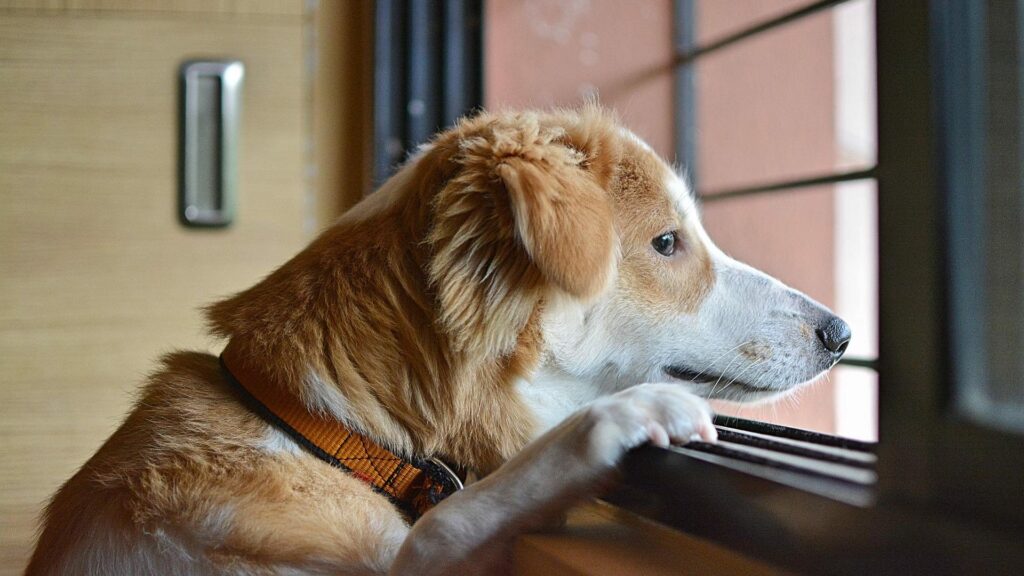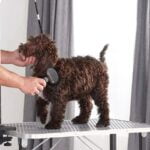Table of Contents
Training a dog to be alone is essential for their well-being and your peace of mind. Dogs are social animals and can experience separation anxiety when left alone. Knowing how to train a dog to be alone can help reduce their anxiety and ensure they feel comfortable and secure. This guide provides ten essential tips to help your dog adjust to being alone.

1. Start with Short Periods
Begin by leaving your dog alone for short periods and gradually increase the duration. This helps your dog adjust to your absence without becoming overwhelmed. Start with just a few minutes and slowly work up to longer periods. For more on starting with short periods, visit ASPCA Separation Anxiety.
2. Create a Safe Space
Designate a safe, comfortable space for your dog to stay while you’re away. This can be a crate, a specific room, or an area with their bed and favorite toys. Ensure the space is secure and free from hazards. For more on creating a safe space, see PetMD Crate Training.
3. Establish a Routine
Dogs thrive on routine. Establish a consistent schedule for feeding, walks, and alone time. A predictable routine helps reduce anxiety and helps your dog know what to expect. For more on establishing routines, visit AKC Dog Training Tips.
4. Use Positive Reinforcement
Reward your dog with treats, praise, and affection for calm behavior when left alone. Positive reinforcement helps your dog associate being alone with positive experiences. For more on positive reinforcement, see Petfinder Positive Reinforcement Training.
5. Provide Mental Stimulation
Keep your dog occupied with puzzle toys, treat-dispensing toys, and interactive games. Mental stimulation helps prevent boredom and reduces anxiety. For more on mental stimulation, visit The Spruce Pets Mental Exercises.
6. Avoid Dramatic Departures and Arrivals
Keep your departures and arrivals low-key to prevent anxiety. Avoid long goodbyes or excited greetings. Calmly leave and return home to help your dog remain relaxed. For more on avoiding dramatic departures, see Cesar’s Way Separation Anxiety Tips.
7. Gradually Increase Alone Time
As your dog becomes more comfortable being alone, gradually increase the duration. Incrementally extending the alone time helps build your dog’s confidence and reduces anxiety. For more on gradually increasing alone time, visit Humane Society Separation Anxiety.
8. Use Calming Aids
Calming aids such as pheromone diffusers, calming collars, and anxiety wraps can help reduce your dog’s stress. These products create a soothing environment and can be particularly helpful for anxious dogs. For more on calming aids, visit PetMD Calming Aids.
9. Exercise Before Leaving
Ensure your dog gets plenty of physical exercise before being left alone. A tired dog is less likely to experience anxiety and is more likely to rest while you’re away. For more on exercising your dog, see AKC Benefits of Exercising.
10. Consult a Professional if Needed
If your dog continues to experience severe anxiety, consult a professional trainer or veterinarian. They can provide guidance, behavior modification techniques, and in some cases, medication to help your dog cope with being alone. For more on consulting professionals, visit ASPCA Professional Dog Training.
Conclusion on Training a Dog to Be Alone
Understanding how to train a dog to be alone is essential for their well-being and your peace of mind. By starting with short periods, creating a safe space, establishing a routine, and using positive reinforcement, you can help your dog feel comfortable and secure when left alone. Providing mental stimulation, avoiding dramatic departures, gradually increasing alone time, and using calming aids can further reduce anxiety. If needed, consult a professional for additional support. For more pet care tips, check out our Pet Care Guide.
FAQs on Training a Dog to Be Alone
How long can I leave my dog alone?
The length of time you can leave your dog alone depends on their age, temperament, and individual needs. Generally, adult dogs can be left alone for 4-6 hours, while puppies and senior dogs may require more frequent breaks.
What are the signs of separation anxiety in dogs?
Signs of separation anxiety include excessive barking, whining, destructive behavior, pacing, and house soiling when left alone. If you notice these signs, consult a veterinarian or professional trainer.
How can I make my dog feel safe when left alone?
Create a safe and comfortable space for your dog, provide mental stimulation, and establish a consistent routine. Calming aids and positive reinforcement can also help your dog feel more secure.
Is crate training helpful for dogs with separation anxiety?
Crate training can be beneficial for some dogs, as it provides a safe and secure environment. However, it’s important to introduce the crate gradually and ensure your dog associates it with positive experiences.
Should I leave the TV or radio on for my dog?
Leaving the TV or radio on can provide background noise that may help reduce anxiety for some dogs. Choose calming music or programs specifically designed for pets.
Can exercise help reduce separation anxiety?
Yes, regular exercise can help reduce











